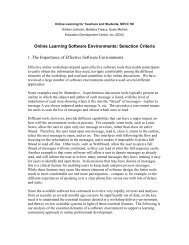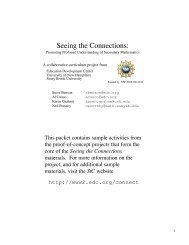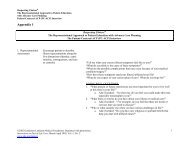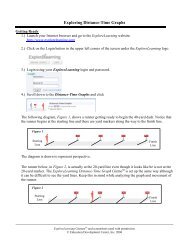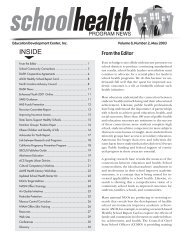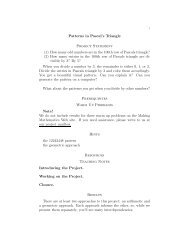It is critical to overcome the digital divide - Education Development ...
It is critical to overcome the digital divide - Education Development ...
It is critical to overcome the digital divide - Education Development ...
You also want an ePaper? Increase the reach of your titles
YUMPU automatically turns print PDFs into web optimized ePapers that Google loves.
consider <strong>the</strong> overlapping areas of culture and technology, and education and technology. Thesection on culture considers how learner identities and cultural background contribute <strong>to</strong>technology use and learning. The section on education looks specifically at <strong>the</strong> ways thattechnology has, or has not, been used effectively in formal and informal education. The reviewconcludes with questions for fur<strong>the</strong>r research.Throughout <strong>the</strong> review we include excerpts from an online dialog conducted by <strong>the</strong>Gender, Diversities & Technology Institute in 2004 on <strong>the</strong> subject of ‘Facilitating and SustainingDiverse Online Communities.’- The Institute assembled an international panel of experts <strong>to</strong>explore such questions as: What are <strong>the</strong> requirements for creating, growing and sustainingdiverse online communities? Do current technologies support and enhance online learningequitably across all learner diversities, including race, SES, d<strong>is</strong>ability and gender? How doex<strong>is</strong>ting learning technologies reflect and reproduce current societal and cultural biases?THE DIGITAL DIVIDE: ACCESS, PARTICIPATION, RECRUITMENT, RETENTIONThe <strong>digital</strong> <strong>divide</strong> has generally been defined as <strong>the</strong> gap in access <strong>to</strong> technology bysocioeconomic status, race, and/or gender. The technologies most often used in studies of <strong>the</strong><strong>digital</strong> <strong>divide</strong> are personal computers and Internet access/connectivity. Efforts <strong>to</strong> <strong>overcome</strong> <strong>the</strong><strong>digital</strong> <strong>divide</strong> include increasing technology access in schools (Kane, Beals, Valeau, & Johnson,2004) and development of community technology centers (Schon, Sanyal, & Mitchell, 1998).These programs provide <strong>the</strong> technology <strong>to</strong> populations who may not have <strong>the</strong> economicresources <strong>to</strong> acquire <strong>the</strong> technology for <strong>the</strong>mselves. Home use of computers continues <strong>to</strong> show agap by race, but that gap <strong>is</strong> closed substantially when community technology access <strong>is</strong> included(A. Alvarez, 2003). Internet use has an even wider gap between whites and minorities, with29.3% of African Americans and 23.7% of Latinos using <strong>the</strong> Internet, as compared with 50.3%3




